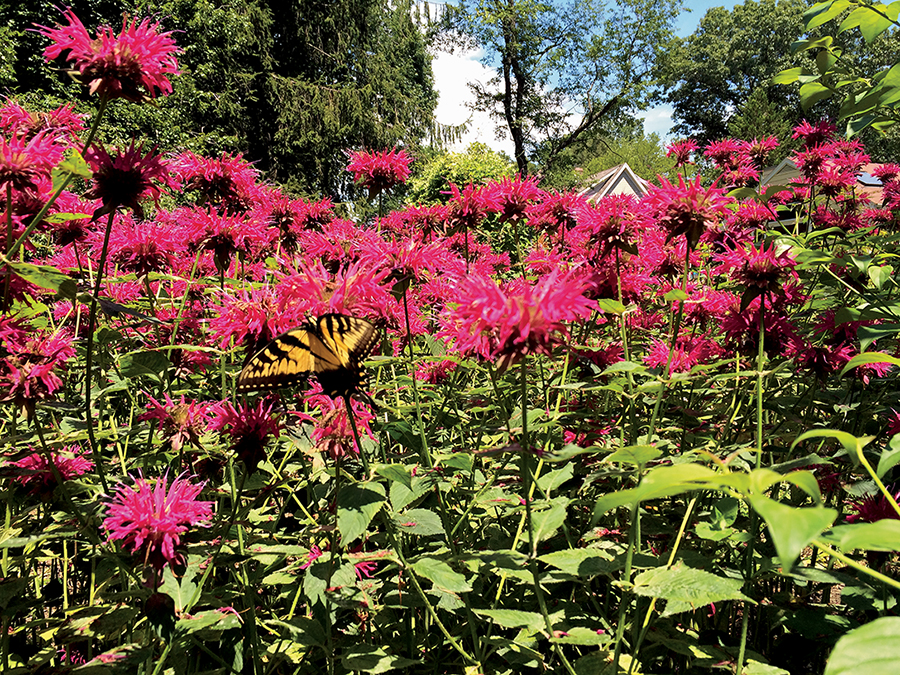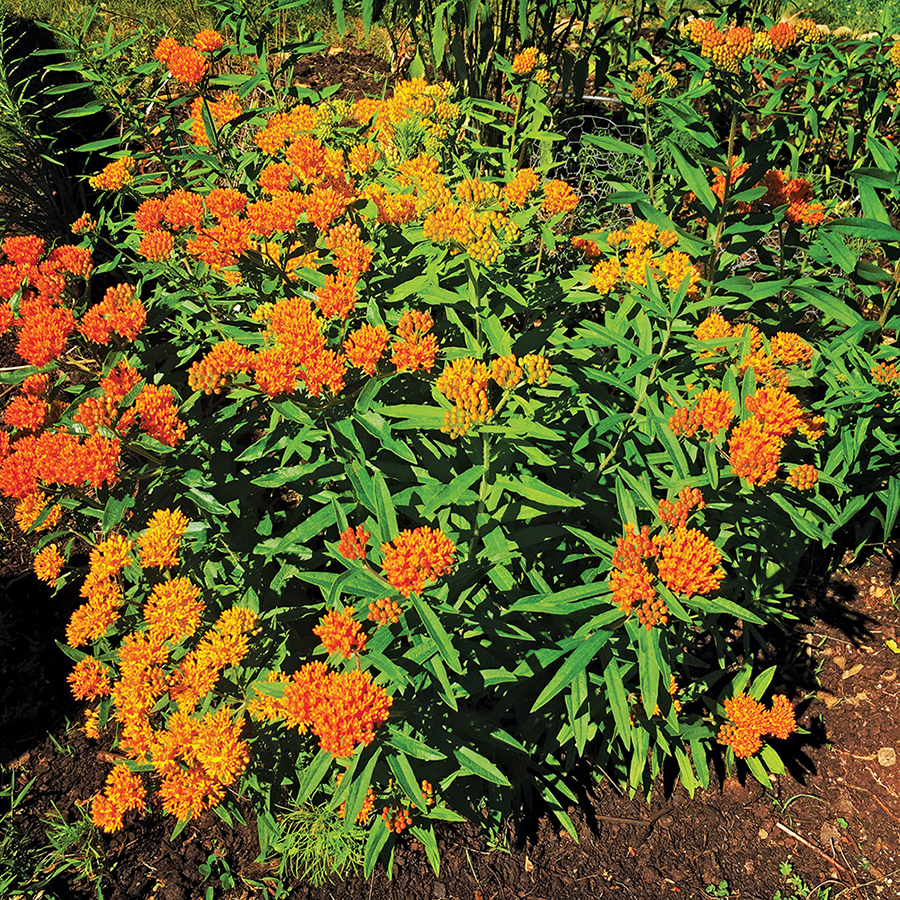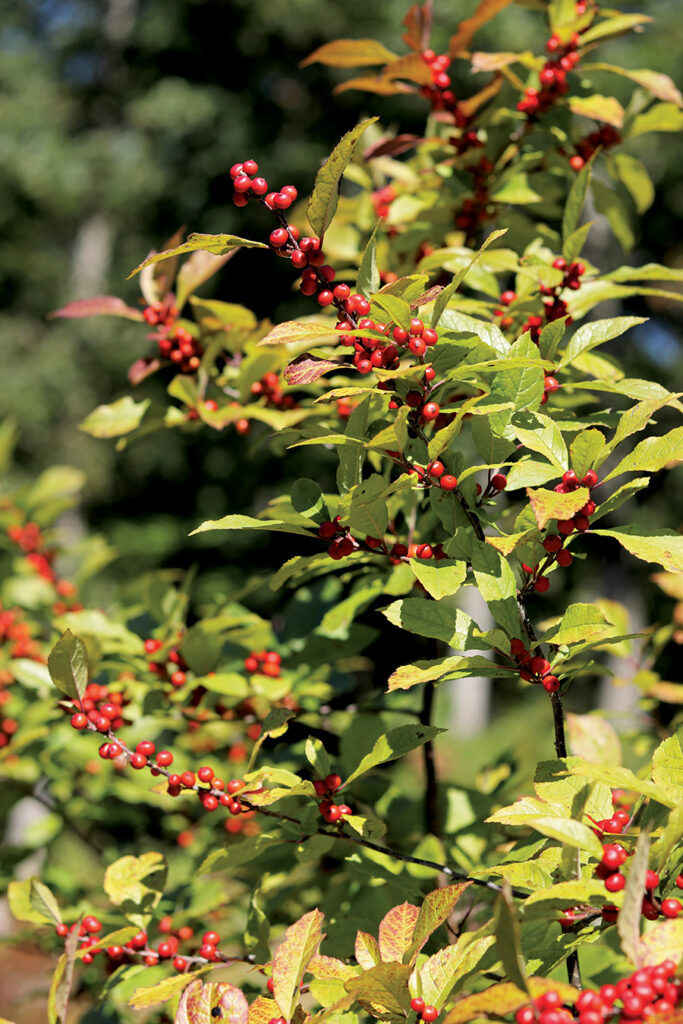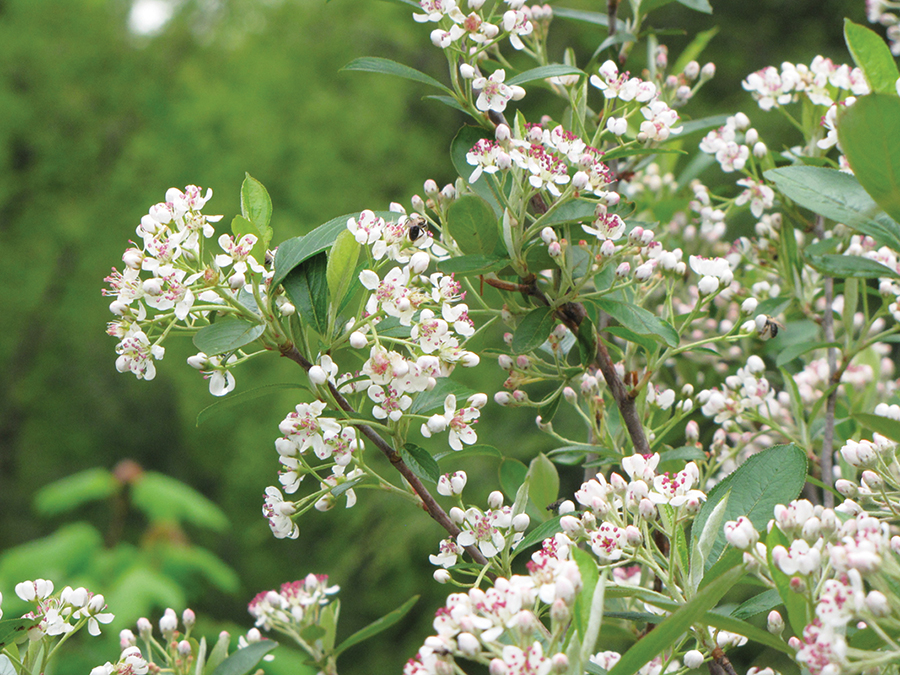Why Native Plants Matter and What to Do About It
Giving Back | Written by: DEEPIKA SAKSENA and JULIET CAIN, Darien Pollinator Pathway Co-Chairs

Bee Balm (Monarda didyma) / photograph courtesy Deepika Sasena
As you consider all you may be doing to give back to the community this year, why not think about a gift to the environment as well? If you have a garden, it’s as easy as choosing native plants instead of invasives. What’s more, when you give to the environment by choosing native plants, you give to yourself, your family and the future.

Butterfly Weed (Asclepias tuberosa) / photograph courtesy Deepika Sasena
Why Native Plants Matter
By native, we mean those plants growing here before the Europeans arrived, plants which have a symbiotic relationship with our native insects, birds and other wildlife, providing food and shelter necessary for their survival, and attracting a diverse array of species—from colorful birds to beneficial insects, thereby fostering a dynamic and thriving ecosystem within your backyard.
Native plants usually have deep root systems which help aerate the soil, making it able to absorb more water than soil that hosts only ornamental plants or grass. Native plants also filter and cleanse that water, making any runoff not nearly as damaging to the Sound and surrounding waterways.
The soil and water quality is further improved by the fact that native plants don’t need any synthetic chemicals to help them grow because they are perfectly adapted to our geological and climatic conditions. This makes them resilient, low-cost, low-maintenance and healthy choices for your garden.
Most importantly, many of our local insects and other species are specialists, meaning they can only be supported by a single native plant. For example, the Milkweed family is the only host plant for the Monarch butterfly. Another great example is the Oak tree which supports thousands of species of butterflies and moths, providing an abundant supply of caterpillars for birds. A loss of Milkweed or Oak therefore results in a direct loss of insects and pollinators that are so key to our food supply!

Winterberry (Ilex verticillata) / photograph courtesy Earth Tones
What You Can Do
The best place to start is to know what you’re planting. Some non-native plants are actually invasive, spreading aggressively and out-competing native vegetation, while offering no contribution to our ecosystems since they don’t support our local species. These plants can therefore wreak havoc on ecosystems by displacing native flora and disrupting wildlife habitats. Some invasive plants, like the Burning Bush (Euonymus alatus), whose seeds are spread by birds and small mammals, and which also spread via their root systems, have become a destructive understory tree in our forests, replacing native vegetation like Spice Bush (Lindera benzoin), New Jersey Tea (Ceanothus americanus) and Highbush Blueberry, and thereby reducing biodiversity. Another invasive, the Tree of Heaven (Ailanthus altissima), is a preferred host for the Spotted Lantern Fly which is destroying fruit crops and trees in many states, including Connecticut. These plants have become a financial and ecological liability and yet Burning Bush continues to be sold in Connecticut.
By incorporating native plants into your landscaping (maybe even replacing some of your lawn with native plants), avoiding the use of pesticides and synthetic fertilizers, and removing invasive plants, you will literally bring your garden to life with a pollinator paradise and all the additional benefits of a healthier soil, such as better water retention (remember the floods Darien has faced in recent years?), reduced erosion and less watering.

Red Chokeberry (Aronia arbutifolia) / photograph courtesy Earth Tones
Plant This …Not That
With native plants, you can not only nurture biodiversity and support our local ecosystem, you can also enhance the beauty of your surroundings: There are gorgeous native alternatives to the invasives you may not even know you’re planting. Here are just a few. For more information or if you have questions, we are standing by ready to help at pollinator-pathway.org/contact-us Note: Be sure to ask your garden center if the plants you are considering are native or not.
| Native | Invasive | |
Vines | • Trumpet Honeysuckle (Lonicera sempervirens) • Virgins Bower (Clematis virginiana) • Virginia Creeper (Parthenocissus quinquefolia) | • Japanese Honeysuckle • Oriental Bittersweet • Wisteria • English Ivy |
Perennials | • Butterfly Weed (Asclepias tuberosa) • Beebalm (Monarda didyma) • Joe-Pye weed (Eupatorium dubium) • Purple Coneflower (Echinacea purpurea) • Swamp Milkweed (Asclepias incarnata) • Blue Giant Hyssop (Agastache foeniculum) | • Purple Loosestrife |
Ornamental Shrubs | • White or Pink Pepperbush (Clethra alnifolia) • New Jersey Tea (Ceanothus americanus) • Highbush Blueberry (Vaccinium corymbosum) • Winterberry (Aronia arbutifolia) • Shining Sumac (Rhus copallinum) | • Butterfly Bush • Burning Bush • Japanese Barberry • Tree of Heaven |
Understory trees | • Flowering Dogwood (Cornus florida) • Red Chokeberry (Aronia arbutifolia) • Red Twig Dogwood (Cornus sericea) • Eastern Redbud (Cercis canadensis) • Spicebush (Lindera benzoin) • Shadbush or Serviceberry (Amelanchier canadensis) • Witch Hazel (Hamamelis virginiana) | • Bradford Pear • Kousa Dogwood |
